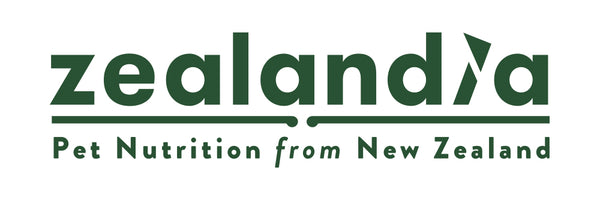What food is best for a cat with a history of urinary tract infections?

Written by Dr Sarah-Jane Molier BVM&S MRCVS BSc (United Kingdom)
Urinary issues are very common in cats. They are so common that there is a blanket term used to describe any condition affecting the lower urinary tract - Feline Lower Urinary Tract Disease (or FLUTD). Diet plays an important part in the management and prevention of urinary issues in cats. So, let’s take a look at which food is best for a cat with a history of FLUTD.
What is Feline Lower Urinary Tract Disease?
Feline Lower Urinary Tract Disease (FLUTD) is not a disease in itself. FLUTD is a group of conditions affecting the lower urinary tract in cats, which share similar symptoms. The ‘lower urinary tract’ refers to the urinary bladder and the urethra (the tube that carries urine from the bladder to outside the body).
Feline lower urinary tract disease includes:
- Feline Idiopathic Cystitis:
‘Cystitis’ means inflammation of the urinary bladder, and ‘idiopathic’ means unknown cause. The majority of cats with FLUTD (55-69%) have feline idiopathic cystitis (FIC). FIC is a complex condition, and there are many factors believed to predispose a cat to FIC. These include stress, the body responding to stress in an abnormal way, and a damaged or abnormal bladder lining.
- Urolithiasis (bladder stones)
Urolithiasis, or bladder stones, account for around 15-20% of cases of FLUTD. Bladder stones are hard accumulations of minerals in the urine, which rub against the bladder lining, causing pain and inflammation. If they pass from the bladder into the urethra, they not only cause pain and inflammation here, but can also cause a blockage. This is known as a ‘blocked bladder’, meaning urine cannot pass outside the body, causing the bladder to keep filling. A blocked bladder is a life threatening emergency.
- Urethral plugs
Urethral mucous plugs (which contain mucous, crystals, inflammatory cells and debris) can also block the urethra. Sometimes the urethra can become blocked by a spasm in the muscles of the urethral sphincter, the muscle that controls the release of urine from the bladder.
Less common causes of FLUTD include:
- An anatomical defect
- Neoplasia (cancer)
- Bacterial cystitis (a bacterial infection)
Bacterial urinary infections are rare in cats, until over the age of around ten. After 10 years of age, anywhere from 20-50% of FLUTD cases will be bacterial cystitis.
What are the signs of urinary issues in cats?
All of the conditions within FLUTD share similar symptoms. As an owner, this means it’s impossible to tell the underlying cause.
The main symptoms of FLUTD are:
- Dysuria: this means difficulty passing urine, so you may see your cat straining or crying out when trying to urinate. It’s easy to confuse this with constipation, so be sure to seek advice from your vet if you aren’t sure.
- Pollakiuria: needing to wee more often.
- Haematuria: blood in the urine, which can include clots.
- Periuria: weeing in inappropriate places, such as the bath.
- Lethargy: lack of energy.
- Behavioural changes: such as unusual aggression, hiding or increased affection.
- Overgrooming: especially around the penis, vulva or tummy.
If you notice any of these signs in your cat, you should book an appointment with your vet. Importantly, if your cat is straining to pee but not passing anything, this is a life threatening emergency. It may mean that your cat has a blocked bladder, and you should take them straight to the nearest vet.
Treatment for FLUTD
The treatment for FLUTD will depend on the underlying cause. Your vet will determine the underlying cause by taking a history (which means asking you some questions) and examining your cat. They may make a presumptive diagnosis of FIC based on these two. If they aren’t sure, they may suggest further tests, such as urine tests, blood tests and / or imaging, to look for an underlying cause. If a cause can’t be found, the diagnosis is usually FIC.
In most cases of FLUTD, treatment includes pain relief, increasing water intake, changing the diet, and reducing stress. Other treatments will depend on the underlying cause, and may include surgery. Many cases of FLUTD need ongoing management, even after treatment. This is especially true in FIC, as once a cat has had FIC, they are more prone to it in the future.
How can I keep my cat's urinary tract healthy?
Now that we understand FLUTD better, let’s take a look at preventing urinary issues in cats. While it’s impossible to completely prevent recurrence of FLUTD, especially FIC, there are some measures you can take to help keep your cat’s urinary tract healthy.
The following measures are known to help, in varying degrees:
- Ensuring your cat drinks enough water
Cats don’t like to eat and drink in the same place, so make sure the food and water bowls are spaced apart. Offer several options of water bowls, in various locations. Many cats prefer wide-based water dishes, so their whiskers don’t touch the sides, and often favour ceramic or metal bowls. A drinking fountain can encourage some cats to drink more, as many cats prefer fresh running water.
It’s well established that cats on kibble don’t take in enough water, so feeding wet food is the best way to increase your cat’s water intake. High moisture foods (75% or more) are ideal.
It’s important to note here that milk is not a substitute for water! Cow’s milk often also causes diarrhoea in cats.
- Maintaining your cat at a healthy body weight
Obesity increases the risk of FLUTD, alongside many other medical conditions. Feeding a good quality, nutritionally complete diet that is higher in protein and lower in carbohydrate and fat can help maintain a healthy weight. If your cat needs to lose weight (or you aren’t sure!), speak with your veterinary team for advice.
- Minimising stress
Stress in cats is not the same as human stress. A new baby, building work, a house move or a cattery stay are common causes of stress in cats. Sharing resources with other cats is also a major cause of stress. Examples of resources include food and water bowls, litter trays and beds. Some cats are particularly susceptible, and something as simple as moving some furniture could be distressing. Keeping to a set routine, ensuring adequate resources (one of each resource per cat, plus one extra) and using pheromone plug-ins can all help.
What do you feed a cat with urinary problems?
Diet plays an important role in treatment, ongoing management, and prevention of FLUTD. Let’s focus on feline idiopathic cystitis (FIC) and bladder stones (urolithiasis), since these are the most common causes of FLUTD.
- Treating bladder stones
Bladder stones are hard accumulations of minerals. They can be made up of various minerals, giving them different names, according to their composition. In cats, around half of all bladder stones are ‘struvite’. Struvite uroliths are predominantly made up of the crystalloid form of ‘magnesium ammonium phosphate hexahydrate’. The most common mineral in urethral plugs in cats is also struvite.
Often, struvite uroliths can be dissolved using a special diet, avoiding the need for surgery. So, if your vet has diagnosed your cat with struvite bladder stones, they may advise trying to dissolve them by feeding a prescription urinary diet. These diets are specially formulated to be low in magnesium and phosphorous (the minerals which form struvite crystals) and to acidify the urine. Increasing water intake by feeding the wet version, so reducing the concentration of the urine, is very beneficial too.
- Preventing FLUTD
While FLUTD can never be completely prevented, diet plays an important role in reducing the chances of recurrence of bladder stones and urinary crystals, and reducing flare ups of FIC.
Your vet may recommend that you feed a diet with low magnesium and phosphorous long term. However, it’s important to ensure that the diet is nutritionally complete, and suitable for long term use. For example, some of the prescription diets can only be fed for a maximum of a few months. There are some non-prescription diets that are low in magnesium and phosphorous which may be suitable. If your cat has had FLUTD, it’s safest to check with your vet if a particular diet is suitable.
Increasing water intake plays an important role in preventing the recurrence of FIC, as well as treating it. Some studies have shown that recurrence rates may be more than halved in cats fed a diet high in moisture content (i.e. canned or wet food). This means that exclusively feeding your cat wet food can reduce the chances of FIC recurring by at least 50%. It is likely that feeding canned food is beneficial for most cats with FLUTD, regardless of the cause.
Key Points
Feline lower urinary tract disease (FLUTD) is a group of conditions affecting the lower urinary tract (the bladder and urethra) in cats. The most common FLUTD is feline idiopathic cystitis (FIC). While FLUTD cannot be prevented, diet can play an important role in preventing recurrence. Increasing water intake is most important, and feeding a wet diet has been proven to be beneficial. In some cases, feeding a diet low in magnesium and phosphorous can help too, under the guidance of your vet. Urinary diets for specific issues should be decided on a case-by-case basis, under the guidance of your vet. As a general rule, diets for cats with FLUTD should contain around 0.07-0.14% magnesium on a dry matter basis, and around 0.5-0.9% phosphorous.
----------------------------------------------------------------------------------------------------------------------------
Notes from the team at Zealandia:
Our canned food products contain 95% meat & organs (excluding water sufficient for processing). This is a typical summary of ingredients:
Deboned Meat: ~61.5%
Lamb Organs: ~30% (Liver, Lung, Green Tripe, Heart, Kidney, Plasma)
NZ Green Mussels: ~3%
Dried Yeast: ~3%
Vegetable Gums: ~1% (Guar Gum, Agar Agar)
Salmon Oil: ~0.5%
Vitamins & Minerals: ~1% (Calcium Carbonate, Potassium Chloride, Taurine, Choline Chloride, Iron Proteinate, Zinc Glycine Complex, Niacin Supplement, Alpha-Tocopherol Acetate, Sodium Selenite, Manganese Proteinate, Copper Glycine Complex, Thiamine Mononitrate, Calcium Pantothenate, Riboflavin, Pyridoxine Hydrochloride, Vitamin A Acetate, Biotin, Vitamin B12 Supplement, Calcium Iodate, Folic Acid, Cholecalciferol)
----------------------------------------------------------------------------------------------------------------------------
Zealandia variants suitable for cats with a history of urinary tract infections include Brushtail, Chicken, & Lamb.
Brushtail: Magnesium 0.08%, Phosphorus 0.9%
Chicken: Magnesium 0.08%, Phosphorus 0.9%
Lamb: Magnesium 0.06%, Phosphorus 0.7%




